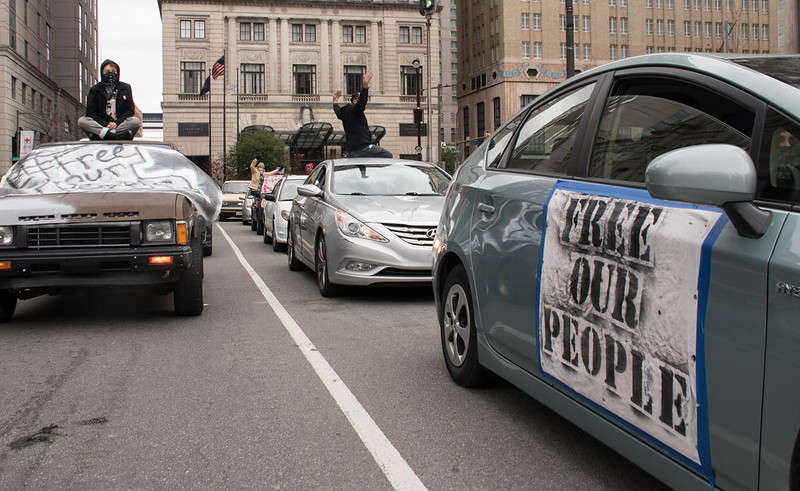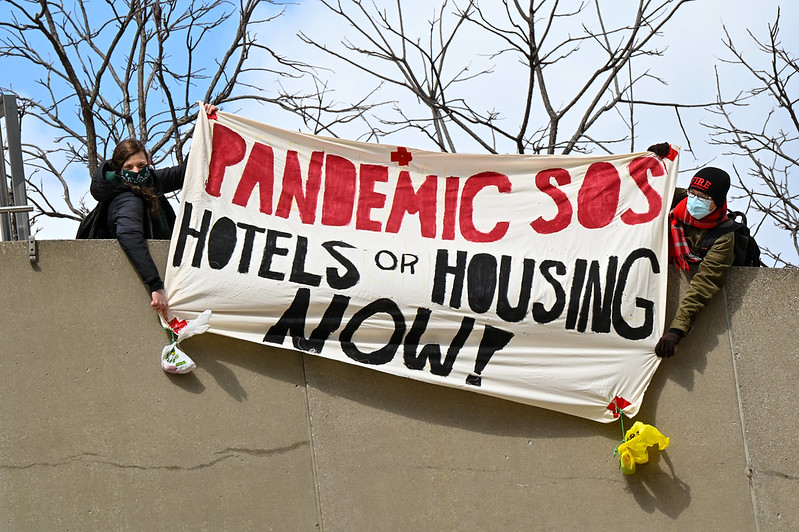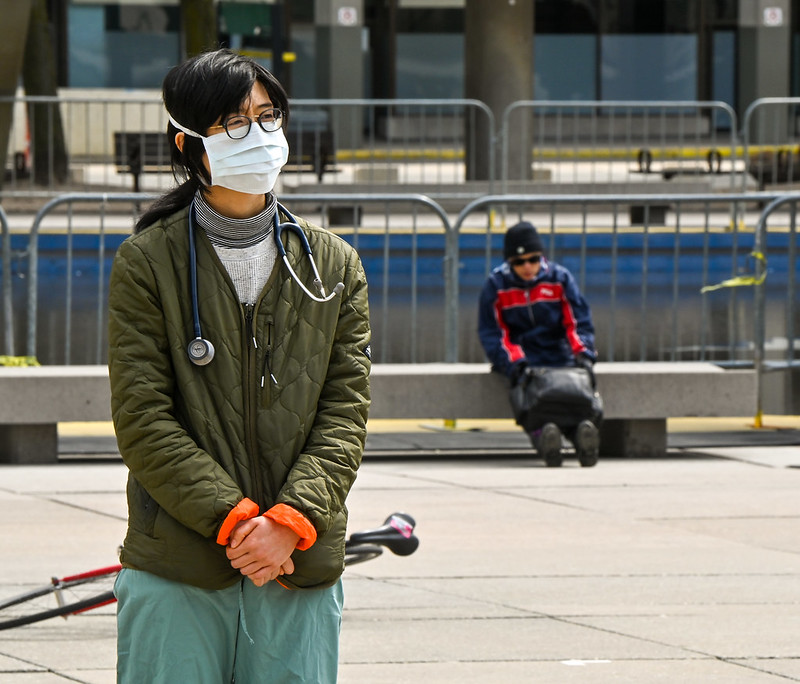COVID-19 has impacted nearly every aspect of our lives and protest is no different. As social distancing has become one of the most effective methods of slowing the spread of disease, organizers are confronted with the challenge of how to collectively demonstrate and get their voices heard. While there has been significant media coverage of the ‘reopen protests’, where participants ignored CDC social distancing guidelines, many protest movements in the US and across the globe have shifted tactics and utilized innovative methods of collective action to continue to fight for justice. These socially responsible protests provide glimpses of hope that democratic values and norms can exist during a pandemic.

Since the emergence of COVID-19, we have seen a surge in car protests. Across the US, people have gotten in their cars, covered them with signs, and organized caravans in cities often demanding the release of people in detention facilities, jails, and prisons who are at great risk of contracting the virus. The car protests allow people to gather in socially responsible ways and demonstrate their collective power. John Bergen, an Associate Pastor who joined the car protests in Philadelphia to advocate for the release of prisoners told the Philadelphia Inquirer, “There’s a real joy I’m experiencing right now, in being able to circle City Hall and hear each other’s horns and see each other’s faces. I’m seeing them through their car windows, but we’re all able to make noise and shout together. I feel powerful right now.”’

Essential workers including nurses, doctors, grocery store employees, and warehouse workers have led a national movement for better worker protections including sufficient PPE, hazard pay, paid sick days and family leave, and more. They have employed various tactics including walkouts and strikes that don’t require gathering. On May Day workers at Instacart, Amazon, and Target organized a national worker strike and consumer boycott to advocate for better pay and working conditions. Nurses have also led socially distant protests, one in front of the White House, where nurses wore masks, stood six feet apart, and held up images of their coworkers who had died from COVID-19. Their protests have put workers rights back at the forefront of the conversation around the coronavirus response.

While mass gatherings often illustrate strength in numbers, organizers have also utilized social media to demonstrate collective action. Just last week, tens of thousands of people ran or walked 2.23 miles and posted to social media using the hashtag #IRunWithMaud to demonstrate outrage at the racist killing of Ahmaud Arbery and to demand justice. By taking a unified action and posting to social media, organizers were able demonstrate widespread calls for justice.
Activists have also used symbolic imagery to call attention to the severity of the crisis and protest the government’s response. Artist, Robin Bell projected memorials of people who have died from COVID-19 on buildings across Washington DC. Activists in Georgia organized a procession of hearses to drive around the State Capitol protesting the decision to end the stay at home order. Others placed body bags on the steps of the Florida State Capitol to protest the relaxing of the shelter in place order.
Internationally, in a year when mass protest movements were building momentum and calling on governments across the globe to take action in support of climate justice, democracy, economic insecurity, and gender based violence, coronavirus has forced these movements to consider new methods of collective action. In Columbia a planned strike transformed into a balcony protest where participants struck pots and pans from their homes every two hours. In Mexico, people protested Femicide from their homes by posting signs from their windows and lighting candles. Climate activists shifted their public demonstrations to online actions, citing the importance of listening to scientists to understand how to respond to global crises. In Israel, thousands stood exactly six feet from each other in Tel Aviv’s Rabin Square to challenge corruption and promote democracy. In China, activists have even turned to video games, spreading “Free Hong Kong” messages in Animal Crossing.
While it is undoubtedly true that coronavirus has created new challenges for organizers and protest movements, it is also incredibly inspiring to witness how people continue to raise their voices and take collective action during this time. In fact, even those of us who are simply staying home, are taking part in one of the largest collective actions to protect our communities.